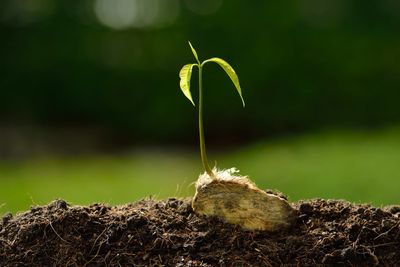Can You Grow a Mango Pit?
First and foremost, mangoes are only produced from mature trees. At maturity, mango trees can reach heights over 60 feet (18 m.) tall. Unless you live in a climate suitable for growth of mangoes outdoors, tropical and sub-tropical areas, it’s unlikely that your plants will ever produce fruit. Additionally, fruits produced from plants will not be like those from which the seed came. This is due to the fact that commercial mangoes are often produced by grafted trees for better disease resistance. Despite these facts, mango pits are still grown by gardeners in more temperate climates and are often admired for their foliage.
Planting a Mango Pit
Seeds from grocery store mangoes are one of the most common places to start. First, you’ll need to check to ensure that the mango pit is actually viable. Sometimes fruits have been chilled or treated. This results in a mango seed which will not grow. Ideally, the seed should be a tan color. Since mango seeds contain a latex sap, which causes skin irritation, gloves are required. With gloved hands carefully remove the pit from the mango. Use a pair of scissors to remove the outer husk from the seed. Be certain to plant the seed immediately, as it should not be allowed to dry out. Plant into a container filled with moist potting mix. Plant the seed deep enough so that the top of the seed is just below soil level. Keep well watered and in a warm location. Use of a heat mat will help expedite the process of the mango seed sprouting. Keep in mind that mango pit germination may take several weeks.
Mango Seedling Care
Once the seed has germinated make sure to water it two to three times a week for the first three to four weeks. Mango trees will require full sun and warm temperatures for continued growth. Overwintering plants indoors will be mandatory for many growing regions.
